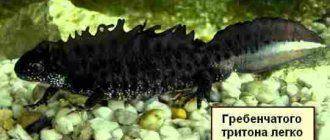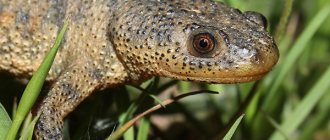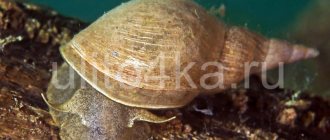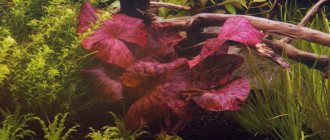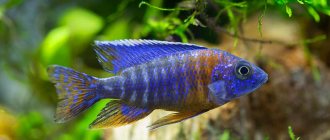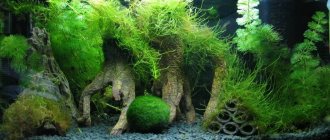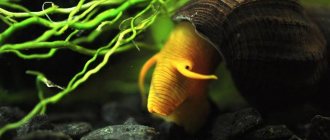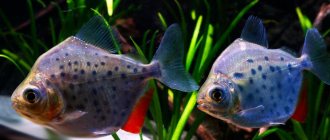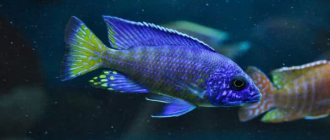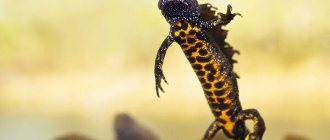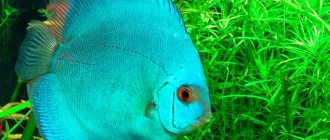Newt is an animal that belongs to the salamander family from the class of amphibians. Newt species belong to the subfamilies of true salamanders, lungless salamanders, and salamanders.
Newts are considered one of the most ancient creatures on the planet: paleontologists believe that their first ancestors appeared about 350-400 million years ago. The population sizes of almost all known modern genera and species do not cause concern. The exception is the dark brown, Zagros, and Sardinian newts. Some species, due to a decrease in numbers in certain territories, are included in the regional Red Books.
Let's take a closer look at the structural features of newts, their reproduction and keeping at home.
Characteristics and description
Newts are considered an intermediate link between aquatic reptiles and amphibians. They live in bodies of fresh water and in surrounding areas with high soil moisture. The structure of the animal's body has the following characteristic features:
- Unlike reptiles, the newt skeleton includes only 4 sections of the axial ridge (the thoracic section is absent).
- The animal breathes through lungs and gills. Partial gas exchange occurs through the skin.
- The circulatory system consists of a three-chambered heart and blood vessels that form two circulation circles. Due to the circulation of mixed blood throughout the body, the newt's body temperature depends on the ambient temperature.
- Metabolic products are excreted by the kidneys and partly by the skin, the outlet of the bladder is discharged into the cloaca.
Amphibians have poor vision, but their sense of smell is well developed: animals can sense prey from several tens of meters away.
Newts lead a gregarious lifestyle: amphibians form small groups of 4-6 individuals of both sexes. They are active mainly at night. They can go out in search of prey during the day, but, as a rule, in rainy or cloudy weather.
With the onset of cold weather, newts look for shelter. They usually overwinter in abandoned burrows of small rodents, depressions in the ground under fallen leaves. When the temperature drops below 0 degrees, their life activity practically stops. Amphibians return to their normal lifestyle in the spring, when the air warms up to +10 degrees.
What does it look like
All varieties of newts have the following common external features:
- the body is spindle-shaped, ending with a laterally compressed tail, the length of which is at least 2/3 of the body length;
- the head is wide, flattened on top;
- the front and hind legs are the same size, there are 4 toes on the front legs, and 5 on the hind legs.
Adult newts range in size from 10 to 20 cm.
What is the difference between a newt and a lizard?
The appearance of lizards and newts has much in common: an elongated body, an elongated tail tapering towards the end, a snake-like head. At the same time, lizards belonging to reptiles and newts belonging to the order of amphibians have many differences. You can determine which of these animals is in front of you using the following table:
| What to pay attention to | In lizards | In newts |
| Skin covering | The surface of the skin is covered with scales | Skin smooth, covered with mucus |
| Fingers | The horny covering on the fingertips forms claws | No claws (except for the Ussuri clawed newt) |
| Language | Forked | There is no bifurcation |
| Tail | Round | Flattened on the sides, with a leathery edge at the top |
How many years do they live
The lifespan of most species of newts in natural conditions does not exceed 10-14 years. A significant part of these defenseless amphibians become victims of natural enemies. For river newts, the greatest danger is from frogs, predatory fish, and snakes. Land species become easy prey for large birds and predatory mammals. In addition, larger newts can eat smaller relatives.
In captivity, if the proper conditions are created, they can live to a very respectable age: 18-20 years. The maximum recorded age of a newt is 28 years.
Wintering
In their natural environment, newts enter the stage of suspended animation (that is, hibernation) in winter. In its natural habitat, the amphibian chooses a place to sleep on land, for example in a pile of fallen leaves or a small abandoned hole. At the same time, amphibians are grouped into small flocks (from 10 to 30 individuals), thereby increasing the chances of survival during the cold season. They often choose a shelter for the winter approximately 50-100 meters from the reservoir, where they spend the active phase of life.
In the case of home keeping, the wintering period usually begins at the end of October or beginning of November. At this time, the animal is provided with a temperature of 15C and a suitable place for wintering. If, in addition to newts, the aquarium also contains tropical fish, it is worth considering the option of transferring the newts to a separate cool tank.
The newt emerges from suspended animation in the spring, when a stable, albeit low, positive air temperature is already maintained outside. In nature, immediately after waking up, newts head to a pond to move on to another life cycle - reproduction.
Types of newts: photos with names
Let's look at the most interesting species of these animals.
Common newt
Lissotriton vulgaris
One of the most common varieties. Adults are characterized by an olive-brown back and a yellow belly. The common newt prefers weak currents, so it can most often be found in small ponds or in shallow rivers.
Comb
Triturus cristatus
Quite large newts (body length - 18-20 cm), whose color is dominated by orange and brown tones. The body of crested newts is covered with a large number of black spots of different shapes and sizes. The species received its name due to the presence of a figured jagged comb that grows at the beginning of the mating season. Suitable for aquarium keeping.
Tylotriton
Tylototriton verrucosus
The body length of an adult animal is 16-17 cm. One of the most beautiful representatives of tailed amphibians: the black body is covered with bright orange spots arranged in a row, the head and tail are also orange. The amphibian is often called the crocodile or royal newt.
Alpine
Ichthyosaura alpestris
Found in the foothills of southern Europe. The back of the Alpine newt is brown-gray, the belly is bright orange, and light yellow stripes with small black spots stretch along the sides and back.
Marble
Triturus marmoratus
Mature individuals of the marbled newt have a light green body. Black spots of different shapes and sizes located on the back and limbs form a characteristic marbled color. The size of adult amphibians reaches 17-18 cm.
Danube
Triturus dobrogicus
The species is widespread in the lower reaches of the Danube and Dnieper. Adult Danube newts have an elongated body slightly flattened at the top. The color of the upper part is dark brown. Rows of small white spots are visible on the sides. The belly is red-orange in color and covered with black spots.
How do species differ from each other?
A special feature of aquarium inhabitants is the ability to adapt to general rules, eat universal food and lead a more or less uniform lifestyle. However, this does not always work out for newts. Thus, the filamentous newt likes to be active at night, when other inhabitants of the aquarium are resting and the danger is minimal. At the same time, the crocodile newt, which has a dim but variegated color, is not afraid to be noticed due to the similarity of its color to water ripples. It boldly swims during the day almost on the surface.
The marbled newt does better out of water. He is ready to bask under the lamp for a long time, resembling a lizard. However, during the mating season, the male's back still acquires a ribbed character.
The Asia Minor newt is a secretive specimen prone to loneliness. Almost always he tries to hide and remain unnoticed. It rarely goes beyond the territory outlined by itself, which makes it attractive for creating an aquarium ensemble.
Where does it live?
The habitat of newts extends to Europe, Asia, North and South America. Most species live in temperate climates.
VARAN
Where live
The newt's natural habitat is shallow freshwater bodies of water and the surrounding area with rich vegetation. They avoid meadows, fields and other open areas. Some species are found in mountain streams and lakes located at altitudes of up to 2000 meters above sea level.
Population/conservation status
The common newt is listed in the Red Book of Russia and Azerbaijan .
Rare species in Great Britain. Included in the Berne Convention (Annex III). On land it occurs as single individuals, in water bodies the number is 0.016-16000 individuals/ha; in some places it reaches up to 110 individuals/m³ of water. Interesting: newt’s skin secretions are caustic, but the poison is not dangerous for humans. For warm-blooded animals, the lethal dose is 7 mg per 1 kg of body weight. The poison causes an increase in blood pressure, destruction of red blood cells and the formation of blood clots; in severe cases, paralysis occurs, breathing stops, the heartbeat changes and the animal dies.
How do they reproduce?
During the mating period, which occurs in late spring and early summer, the body color of sexually mature males becomes brighter, and a leathery ridge appears on the back. In some species it is quite high and consists of individual denticles. Only Carpathian newts do not form a crest.
The reproduction process occurs in water. Males attract females by swimming around and making wave-like movements with their tails. After the formation of a pair, the male releases a spermatophore into the water, and the female draws it into herself through the cloaca. After a few days, she begins to lay fertilized eggs. Eggs are laid in equal small portions over several weeks. The female attaches each egg to the leaves of aquatic plants. In just one season, newts lay from several dozen to several hundred eggs.
The newt larva, hatched after 2-3 weeks, is only 3-4 mm long. Amphibians are born with external gills, with the help of which they breathe until the next stage of development.
The larval stage lasts 2-2.5 months. By this time, the formation of limbs and all body systems is completed, and the cub becomes completely similar to an adult.
Reproduction
Newts reach sexual maturity at three years of age. The amphibian reproduces well in captivity, but it is necessary to create optimal conditions for breeding.
Amphibians breed in the spring. After hibernation, the color of the males becomes saturated, which indicates readiness for fertilization. The male and female are transplanted into a separate tank where they breed. The temperature in the breeding terrarium should be no higher than 18 degrees.
The fertilized female is placed in another terrarium with dense green thickets. She will lay her eggs in the bushes, wrapping them in leaves. In a month, offspring will appear from the eggs.
Maintenance and care
Newts are very popular among lovers of exotic pets. Before purchasing an amphibian, you should familiarize yourself with information about different types of newts and find out what conditions they require. The most suitable for breeding at home are the common newt, filamentous newt, spiny newt (or ribbed newt), Spanish albino newt, Chinese red-bellied newt (or dwarf fire newt).
OCTOPUS
Aquarium or terrarium
When choosing a habitat for a newt, you should take into account that all varieties of these amphibians are divided into aquatic and land. Aquatic animals can be kept in aquariums completely filled with water; for land animals, terrariums with obligatory land islands are set up. It is best to choose a model with a lid, as newts are able to move on glass.
A terrarium or aquarium for a newt is chosen in accordance with the size of the animal, as well as taking into account how many individuals will live there. The minimum aquarium capacity for one amphibian is 40-50 liters.
What to feed
When kept at home, newts are fed earthworms, bloodworms, and aquarium shrimp. As a delicacy, you can offer your home newt chopped liver, fish fillet, and shrimp meat. Young animals are fed once a day; after reaching two years of age, food can be given every other day.
The entry of foreign objects into the amphibian's esophagus can result in intestinal obstruction, therefore it is not recommended to use sand or very small stones as soil for an aquarium or terrarium.
How to determine the sex of a newt
Sexual differences are especially evident during the breeding season, as in the spring the males change color and develop a crest. The sex can be determined by the thickness of the amphibian’s body: females are more rounded and thicker.
Many species have their own individual characteristics of sexual dimorphism. Thus, in male spiny newts, the cloaca looks slightly swollen, and light calluses are visible in the lower part of the base of the limbs.
Diseases
When bred in captivity, newts can be affected by fungal diseases (saprolegniosis and mucosis). Among infectious diseases, the most common in amphibians is the so-called “red leg”. The disease manifests itself by the appearance of wounds and hemorrhages on the skin of the abdomen and in the upper part of the limbs. Before starting treatment, tests must be done in a veterinary laboratory to identify the type of pathogen. Treatment is prescribed depending on the results.
DOBERMAN
Diseases
Newt diseases are mainly associated with improper diet and maintenance of amphibians. Also, amphibians often develop a disease such as pneumonia, which is a consequence of the penetration of parasites into the pet.
In addition to injuries and damage, common ailments include:
- Fungal diseases that affect the skin of pets.
- Sepsis is thought to be caused by microbes that enter the blood of amphibians.
- Dropsy is an accumulation of fluid in tissues.
If you discover that your pet is feeling unwell or has external abnormalities, you should seek advice from a specialist who will make a diagnosis and prescribe treatment.
Newt's dropsy
Interesting facts about newts
- Newts are capable of regeneration, and they can restore not only parts of lost limbs, but also slightly damaged internal organs and eyes.
- The yellow-bellied newt, which lives on the American continent, is poisonous. The poison released from the glands is distributed over the surface of the skin and has a high degree of toxicity. Human contact with this amphibian can be fatal. The greenish newt is also a poisonous amphibian, but its poison is much less toxic than that of the yellow-bellied newt.
- The four-toed newt, which lives in the northern regions of Russia and the Japanese islands, can withstand temperatures down to -40 degrees during wintering.
- The most popular sea souvenir shell is called a newt's horn. Aborigines from the islands of Oceania drilled several holes in such shells and used them as a musical instrument.
